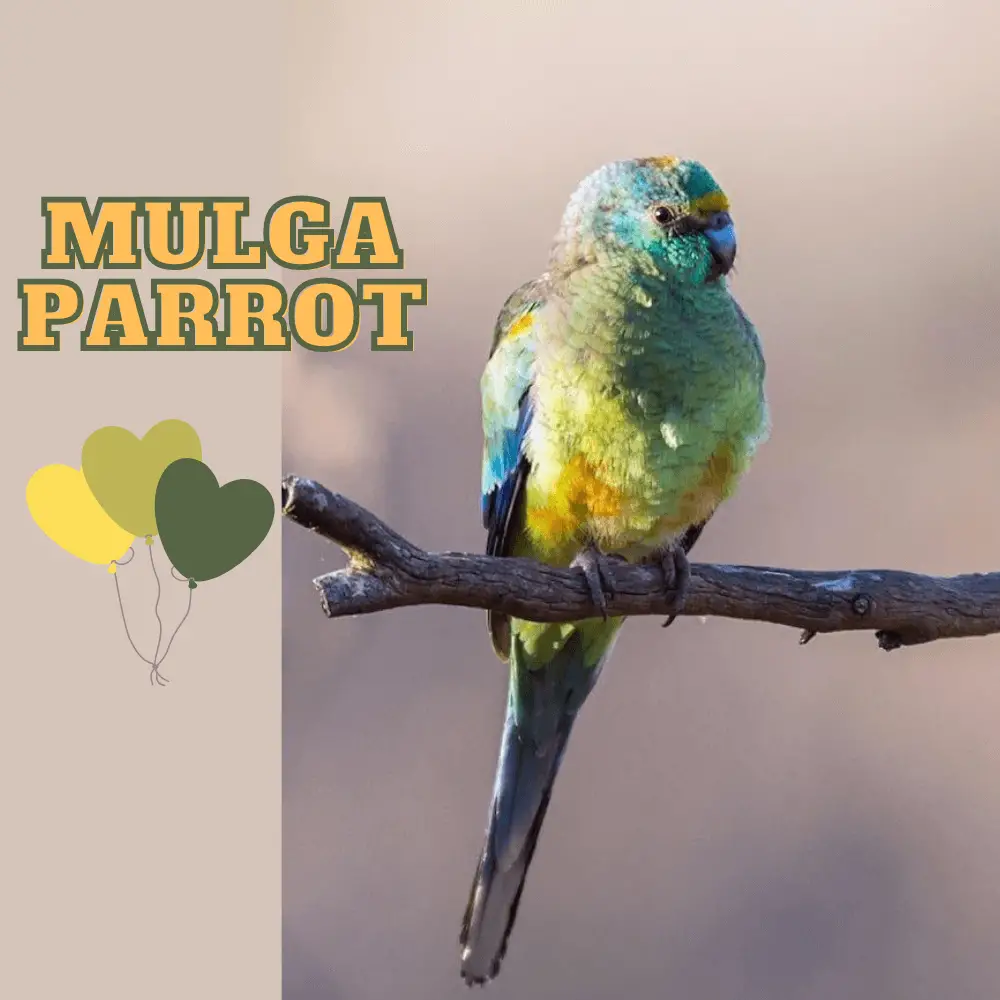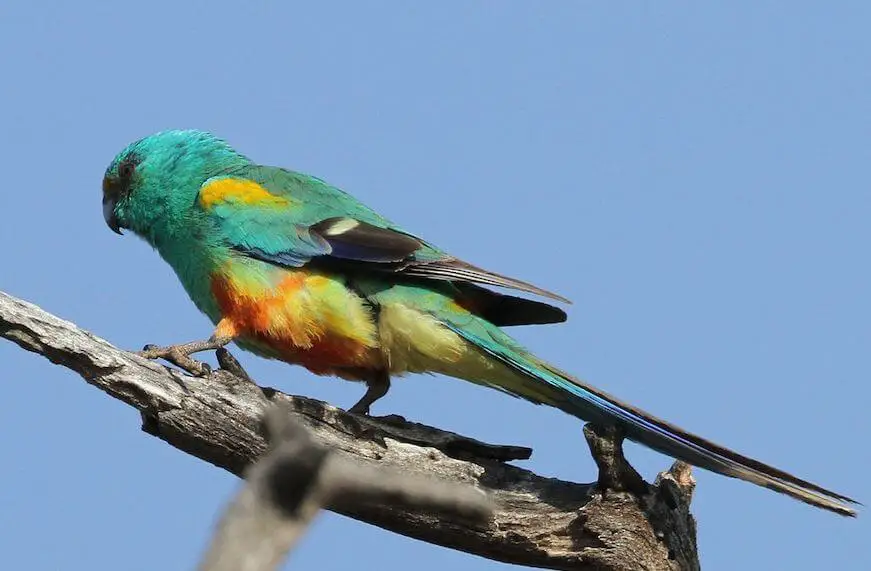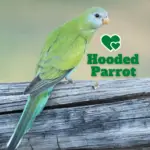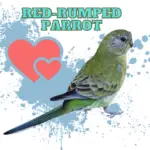
Mulga Parrot 27–28 cm; 53–70 g. Predominantly bright green, but with the yellow frontal band, red hind crown, yellow lesser wing-coverts, dark blue on outer wing-coverts, blackish primaries,
belly to undertail-coverts yellow with orange markings, yellowish-green band and red patch on rump and upper tail-coverts respectively, tail dark blue washed green, outer feathers blue-tipped white.
Mulga Parrot Female much drabber olive-green, becoming paler on the belly, with red lesser wing-coverts; pale underwing stripe. Immature like female but duller.
Systematics History
Forms exsul and ethelae are considered undiagnosable. Monotypic.
Subspecies
Monotypic.

Distribution
SC Australia from extreme W to interior SE.
Habitat
Lightly wooded grasslands, mallee, arid scrublands, with a range largely coincident with that of mulga Acacia aneura, albeit in no strict association; often in the vicinity of waterholes and seasonal creeks.
SOURCE: Bird watchers Channel
Movement
No large-scale seasonal movements occur, with some pairs visiting nest sites throughout the year. However, some nomadism may occur, if unexplained declines in certain areas prove to reflect natural displacements rather than man-caused disappearances.

Diet and Foraging
Mulga Parrot Seeds of grasses, herbs, trees, and shrubs, including mulga and A. tetragonophylla, mistletoe Amyema murrayi,
the saltbushes Atriplex vesicaria, and Enchylaena tomentosa, chickweed Cerastium glomeratum, Chenopodium, Kochia, Bassia, Erodium, and Lysiana exocarp; small grubs once recorded.
SOURCE: Plumes of Oz
Sounds and Vocal Behavior
The commonest Mulga Parrot call is a sharply up slurred whistle, “huweet!”, either repeated at regular intervals or in fast series. When perched, also utters soft contact calls, mainly short and guttural.
Breeding
Jul–Dec, but nesting extends virtually throughout the year if conditions are favorable. Nest in a hollow limb or hole in the tree, high up when tall trees are available, but frequently in small, stunted trees, once in a sandbank, and once in metal pipes used as posts. Mulga Parrot Eggs 4–7, usually 5; incubation lasts 19 days; nestling period c. 4 weeks.
Conservation Status

Not globally threatened. CITES II. Locally common; uncommon in SW Australia. Although some decline in numbers may have occurred since European settlement, there is no evidence of a contraction of range.




















